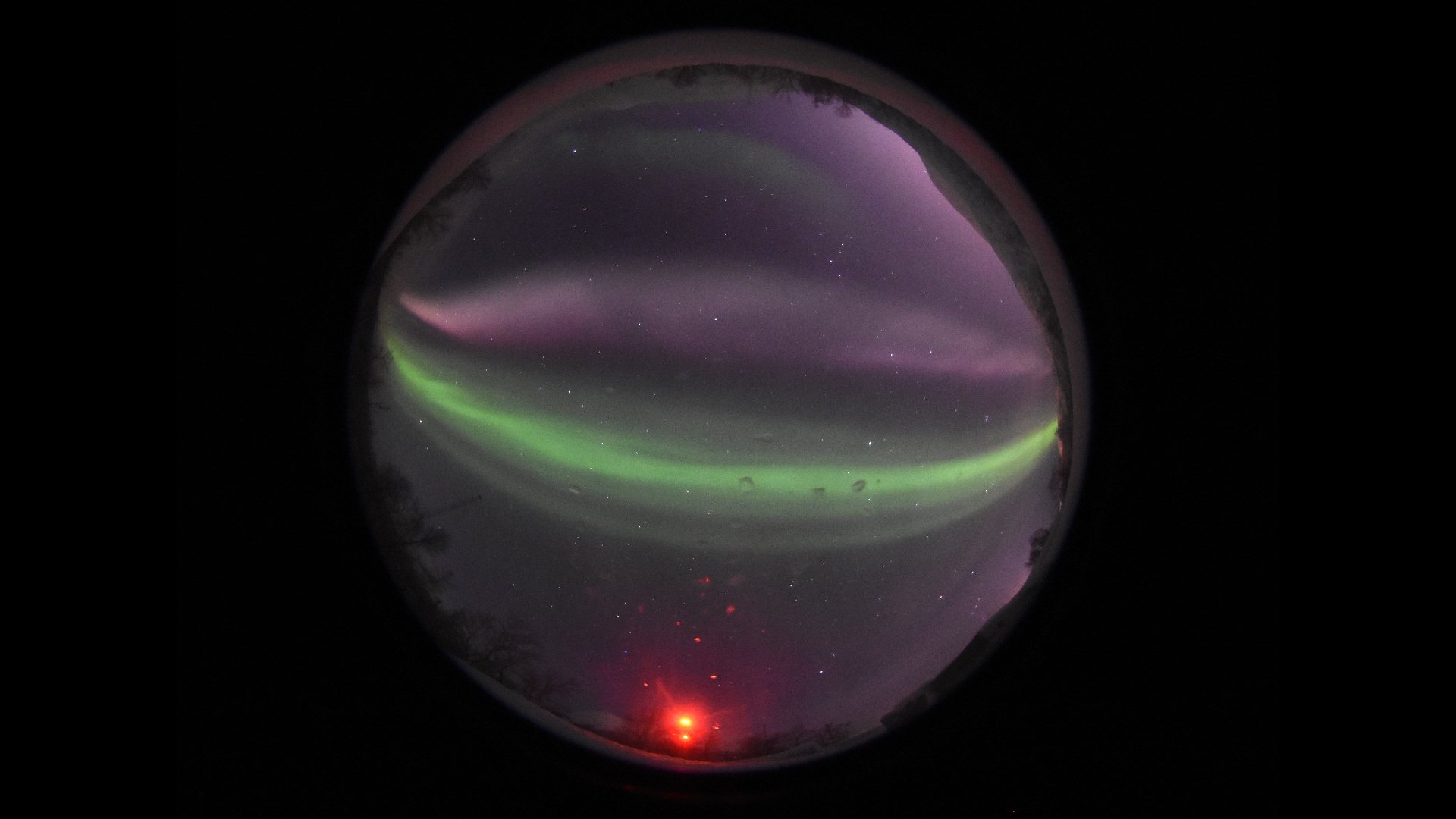STEVE — the bizarre purple ribbon in the sky — has a 'secret twin' that appears only before dawn, study finds
An atmospheric phenomenon known as STEVE has a secret twin that appears before the break of dawn and flows in the opposite direction, new research finds.

A purple ribbon of light in the sky known as "STEVE" appears to have a long-lost twin.
This isn't the plot of a space soap opera; it's a finding from a trio of European Space Agency satellites known as Swarm. The research, published in the journal Earth, Planets and Space in April, finds that whereas STEVE appears before midnight and flows from east to west, a twin phenomenon occurs in the predawn hours, flowing in the opposite direction.
STEVE stands for "strong thermal emission velocity enhancement." The phenomenon was first noticed in 2016 thanks to a group of amateur aurora watchers who met on a Facebook group called Alberta Aurora Chasers. Photographers in the group had captured images of a mysterious purple ribbon of light amid the greens and reds of the typical northern and southern lights. Researchers got wind of these strange sightings and pulled data from the Swarm satellites as they passed through the purple streak. There, 186 miles (300 kilometers) up, the temperature suddenly jumped by 5,400 degrees Fahrenheit (3,000 degrees Celsius), the researchers found.
STEVE, it turned out, was not an aurora at all. It was a 15-mile-wide (25 km) ribbon of charged gas categorized as a "subauroral ion drift." The gas was measured flowing westward at 4 miles per second (6 kilometers per second) — slower than the 6 miles per second (10 km/s) motion of atmospheric gases on each side.
Related: 32 stunning photos of auroras seen from space
Astronomers knew that, in a mirror image of the evening hours, a similar stream of gas flows eastward before dawn. However, no vibrant visual component like STEVE had ever been seen in association with this stream. Then, Norwegian photographer Gabriel Arne Hofstra happened to be looking through a database of images from the all-sky digital camera at the Ramfjordmoen Research Station above the Arctic Circle when he saw a STEVE-like purple ribbon in an image from the predawn hours of Dec. 28, 2021.
Researchers from the University of Electro-Communications in Japan, the Swedish Institute of Space Physics, and the Arctic University of Norway then found that two Swarm satellites had made measurements in the purple ribbon during that time period. They examined the data and found that, sure enough, the purple corresponded with an eastward stream of hot gas: STEVE's secret twin.
Sign up for the Live Science daily newsletter now
Get the world’s most fascinating discoveries delivered straight to your inbox.
"As a scientist, collaborating with a photographer to uncover this new phenomenon has been a fantastic experience," Sota Nanjo, of the University of Electro-Communications, said in a statement. Photographers are valuable collaborators when it comes to observing the night sky, Nanjo added.
"Such efforts are particularly crucial in the coming years as solar activity approaches its peak, when we may encounter extraordinary phenomena," Nanjo said.

Stephanie Pappas is a contributing writer for Live Science, covering topics ranging from geoscience to archaeology to the human brain and behavior. She was previously a senior writer for Live Science but is now a freelancer based in Denver, Colorado, and regularly contributes to Scientific American and The Monitor, the monthly magazine of the American Psychological Association. Stephanie received a bachelor's degree in psychology from the University of South Carolina and a graduate certificate in science communication from the University of California, Santa Cruz.









